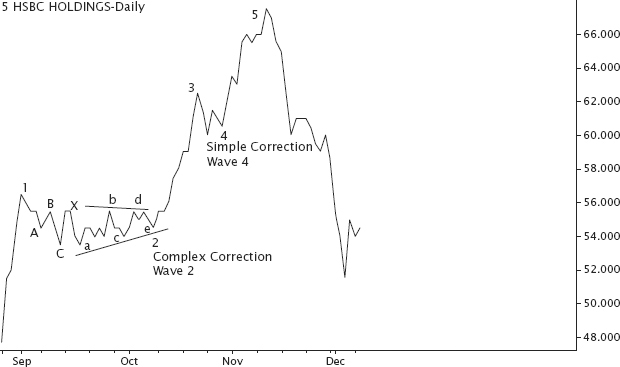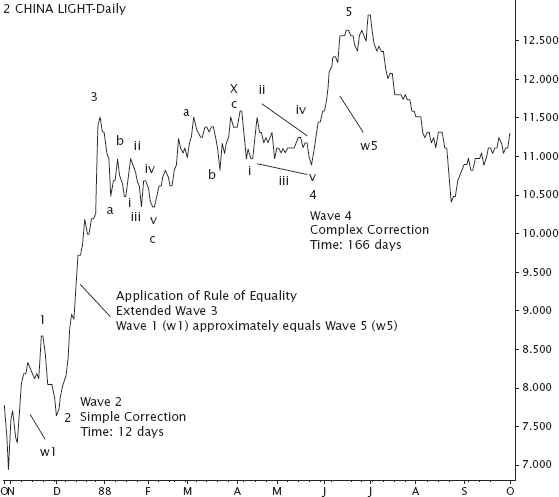RULE OF ALTERNATION
The practicality of applying the Rule of Alternation is more useful when it relates to alternate waves rather than adjacent waves. In a five-wave structure, Wave 2 can be expected to alternate with Wave 4 in at least one of the following ways:
- Pattern of construction
- Time of formation
- Strength and depth of formation
When Wave 2’s formation is a complex correction, Wave 4’s formation can be anticipated to be simple. (See Figure 4.26.)
FIGURE 4.26 The Rule of Alternation says, if Wave 2 is a complex pattern, then Wave 4 should be a simple pattern. Here, Wave 4 is a simple corrective pattern.

When the formation of Wave 2 is a simple correction, Wave 4’s formation can be anticipated to be a complex pattern. (See Figure 4.27.)
FIGURE 4.27 This chart shows the Rule of Alternation. Wave 2 completes a simple correction in 12 days, but Wave 4 completes a complex correction in 166 days (138 percent of 12 days in Wave 2). Note that 138 percent is 100 percent plus 38 percent; and 38.2 is a Fibonacci number.

Get Timing Solutions for Swing Traders: A Novel Approach to Successful Trading Using Technical Analysis and Financial Astrology now with the O’Reilly learning platform.
O’Reilly members experience books, live events, courses curated by job role, and more from O’Reilly and nearly 200 top publishers.

